Luisa Cáceres de Arismendi (mi Heroína favorita. Monólogo/.Luisa Cáceres de Arismendi (my favorite Heroine. Monologue.
226
About :
Luisa Cáceres Díaz de Arismendi (Caracas, 25 de septiembre de 1799- Caracas, 2 de junio de 1866) fue una heroína y prócer de la Independencia de Venezuela y esposa del General Juan Bautista Arismendi.
Fue la hija mayor del matrimonio formado por el profesor de latín y gramática José Domingo Cáceres de origen canario, y su esposa Doña Carmen Díaz. Su padre, se ocupó de enseñarle a leer y escribir, así como la instruyó en los principios y normas morales propias de la época y que fueron puestos a prueba durante los años de cautiverio y destierro de la joven. Tuvo dos hermanos menores, Félix y Manuel Cáceres.
Como era tradición en la época, su educación es orientada para ejercer las labores propias de una esposa y de una madre. No recibió instrucción escolarizada.
Desde temprana edad, Luisa Cáceres se distinguía por su belleza. De estatura mediana y finas facciones, llamaba la atención por su porte y gentileza. En el año de 1814, antes de cumplir los quince años de edad, fue pedida en matrimonio ante sus padres por el coronel Juan Bautista Arismendi, 24 años mayor que ella y viudo hacía pocos años de Doña María del Rosario Irala.
El año de 1814 fue un año adverso para la recién creada República y también para la familia Cáceres; el 6 de marzo las tropas del realista Francisco Rodete asaltaron la guarnición de Ocumare y matan al padre de Luisa quien se encontraba allí por invitación de su amigo el general Juan José Toro.
La Comandancia Militar, en Caracas, a cuyo frente se encontraba el coronel Juan Bautista Mendigar, organiza una expedición de jóvenes estudiantes y acude el día 14 en auxilio de los patriotas situados en Ocumare; entre los soldados de la expedición estaba Félix Cáceres, hermano de Luisa. Las tropas de Mendigar son derrotadas y Félix es hecho prisionero y ejecutado el 16 de marzo.
Por otra parte las sucesivas derrotas y la ofensiva de José Tomás Boves y de su “Legión infernal” obligan a las fuerzas patriotas a abandonar la plaza de Caracas; el 7 de julio de 1814 se emprende la retirada a oriente comandada por Simón Bolívar y José Félix Ribas (hecho conocido en la historia venezolana como Emigración a Oriente); entre los emigrados marcha la familia Cáceres, durante la travesía mueren 4 familiares de Luisa y solo quedan ella, su madre y un hermano menor. Los emigrados pasan por Barcelona y se dirigen a Cumaná a donde llegan a fines de agosto, pero la calma será por poco tiempo ya que Boves toma la ciudad.
Muchos de ellos consiguen pasar a Margarita donde Arismendi puede ofrecerles alguna seguridad. El coronel Arismendi busca a la familia Cáceres, a quienes había conocido y frecuentado por algún tiempo en Caracas en la Navidad de 1813, les proporciona vestido, alojamiento y demás recursos necesarios. El 4 de diciembre de 1814 Luisa Cáceres contrae matrimonio con el coronel Juan Bautista Arismendi.
Presidio en isla de Margarita
Para el 9 de abril de 1815 Arismendi es Gobernador provisional, momento en que a la isla de Margarita arribó el General Pablo Morillo al frente de una escuadra realista como nunca se había visto en las costas de Venezuela. Arismendi se rinde sin entrar en combate ante la superioridad del enemigo y Morillo decreta una amnistía general. El acoso español se inició por todo el territorio de la República, durante algunos meses los Arismendi viven en las afueras de La Asunción bajo el espionaje y la presión que las autoridades españolas mantienen sobre los simpatizantes de la causa patriota en la isla.
En septiembre de 1815 se ordena apresar a Arismendi. Este escapa y se oculta con uno de sus hijos en las montañas de Copey; el día 24 de septiembre Luisa, quien se encontraba embarazada, es tomada como rehén para doblegar a su esposo y encerrada bajo la vigilancia en la casa de la familia Anés, días después es trasladada a un calabozo del Castillo Santa Rosa en La Asunción. Un lugar desprovisto de ventanas y luz. Allí recibió torturas y vejámenes ante los cuales nunca cedió. Un centinela vigilaba hasta sus menores movimientos y es obligada a comer el rancho que le dan como único alimento.
Las acciones militares de Arismendi le permiten hacer prisioneros a varios jefes españoles entre ellos al comandante Cobián, de la fortaleza de Santa Rosa por lo cual el jefe realista Joaquín Urreiztieta propone a Arismendi canjear esos prisioneros por su esposa. Tal ofrecimiento no es aceptado y el emisario recibe por respuesta: «Diga al jefe español que sin patria no quiero esposa». A partir de aquel momento empeoran las condiciones del cautiverio y se desvanece la posibilidad de libertad al fracasar los patriotas en un intento de asalto de la fortaleza llevado a cabo un mes después de su apresamiento. Una gran alarma en la noche avisa del posible asalto al cuartel. Al amanecer, cuando todo está en calma, solo oye los lamentos de los moribundos y de los heridos de la refriega. Horas más tarde los soldados la sacan de su prisión para pasearla sobre la explanada del cuartel, donde han sido fusilados los prisioneros. El objetivo de sus verdugos era que se paseara entre los cadáveres de los patriotas fusilados. La sangre derramada va a desembocar en el aljibe de la prisión y Cáceres de Arismendi es obligada a beber de esa agua. El 26 de enero de 1816, Luisa da a luz una niña que muere al nacer dadas las condiciones del parto y del calabozo en el cual se encontraba prisionera.
Traslado a la prisión de la Guaira Editar
Los brigadieres Juan Bautista Pardo y Salvador Moxó ordenan que se traslade a la detenida al Castillo San Carlos de Borromeo de Pampatar donde permanece algunos días, luego es trasladada a la prisión de La Guaira y posteriormente al convento de la Inmaculada Concepción en Caracas, donde ingresa como prisionera el 22 de marzo de 1816. Durante todo este tiempo se le mantiene incomunicada y sin noticias de sus familiares. Los triunfos de las fuerzas republicanas comandadas por Arismendi en Margarita y por el general José Antonio Páez en Apure determinaron que el brigadier Moxó ordenara el traslado de Luisa a Cádiz, por tal motivo es llevada de nuevo a la prisión de La Guaira el 24 de noviembre de 1816 y embarcada el 3 de diciembre. En alta mar son atacados por un buque corsario que se apodera de todo el cargamento y los pasajeros son abandonados en la isla de Santa María de las Azores.
Estancia en Cádiz
Imposibilitada de regresar a Venezuela, Luisa llega a Cádiz el 18 de enero de 1817. Es presentada ante el capitán general de Andalucía, quien protesta por la arbitraria decisión de las autoridades españolas en América y le da la categoría de confinada, le asigna una pensión de 10 reales en vellón diarios y confía su protección al médico José María Morón y su esposa Concepción Pepet, luego que pagan una fianza y se comprometen a presentarla mensualmente ante el juez de alzada. Durante su permanencia en Cádiz, se negó a firmar un documento donde manifestaba su lealtad al Rey de España y renegaba de la filiación patriota de su marido a lo cual respondió que el deber de su esposo era servir a la patria y luchar por libertarla. El destierro transcurre sin noticias de su madre y su esposo. En marzo de 1818 el teniente Francisco Carabaño y el inglés Mr. Tottem se ofrecen para ayudarla a trasladarse a América; se hacen todos los preparativos pertinentes para la fuga y la joven promete que su esposo pagará todos los gastos al arribar a tierra margariteña. Se despide de la familia Morón y emprende viaje a bordo de una fragata de bandera norteamericana.
Llegada a Filadelfia
El 3 de mayo de 1818 llega a Filadelfia donde conoce a los familiares del almirante patriota Lino de Clemente, emigrados a Estados Unidos, quienes le brindan amistad y apoyo. El coronel Luis Rieux, comisionado por Arismendi, visita a Luisa y se encarga de su traslado a Margarita a donde llega el 26 de julio de 1818. Posteriormente, el 19 de septiembre de 1819, el Consejo de Indias dicta una resolución mediante la cual se le concedía absoluta libertad y facultad de fijar su residencia donde quisiera.
Residió en Caracas hasta el día de su muerte el 2 de junio de 1866, después de haber visto a su patria libre y la bandera de la libertad ondeando en la América anteriormente española.
https://es.m.wikipedia.org/wiki/Luisa_C%C3%A1ceres_de_Arismendi
Luisa Cáceres de Arismendi es definitivamente mi heroína favorita una mujer que no se dejó doblegar por las autoridades españolas y no traicionó sus ideales lucho hasta el final.
Los dejo con representación escénica de mi autoría . Que la disfruten hasta la próxima.
Luisa Cáceres Díaz de Arismendi (Caracas, September 25, 1799 - Caracas, June 2, 1866) was a heroine and hero of the Independence of Venezuela and wife of General Juan Bautista Arismendi. *
She was the eldest daughter of the marriage formed by the Latin and grammar teacher José Domingo Cáceres of Canarian origin, and his wife Doña Carmen Díaz. Her father was in charge of teaching her to read and write, as well as instructed her in the principles and moral standards of the time and that were put to the test during the years of captivity and exile of the young woman. She had two younger brothers, Félix and Manuel Cáceres. *
As was tradition at the time, her education is oriented to carry out the tasks of a wife and a mother. She received no formal instruction. *
From an early age, Luisa Cáceres was distinguished by her beauty. Of medium height and fine features, she attracted her attention by her bearing and gentleness. In 1814, before she was fifteen years old, she was asked to marry her parents by Colonel Juan Bautista Arismendi, 24 years her senior and a few years widower of Doña María del Rosario Irala. *
The year 1814 was an adverse year for the newly created Republic and also for the Cáceres family; On March 6, the royalist Francisco Rodete's troops attacked the Ocumare garrison and killed Luisa's father, who was there at the invitation of his friend, General Juan José Toro. *
The Military Command, in Caracas, headed by Colonel Juan Bautista Mendigar, organizes an expedition of young students and goes on the 14th to the aid of the patriots located in Ocumare; Among the soldiers of the expedition was Félix Cáceres, Luisa's brother. Beggar's troops are defeated and Felix is taken prisoner and executed on March 16. *
On the other hand, the successive defeats and the offensive of José Tomás Boves and his "Infernal Legion" force the patriotic forces to abandon the Plaza de Caracas; On July 7, 1814, the withdrawal to the East was undertaken, commanded by Simón Bolívar and José Félix Ribas (a fact known in Venezuelan history as Emigration to the East); Among the emigrants, the Cáceres family marches. During the journey, 4 of Luisa's relatives die and only she, her mother and her younger brother remain. The emigrants pass through Barcelona and go to Cumaná where they arrive at the end of August, but the calm will be for a short time as Boves takes over the city. *
Many of them manage to go to Margarita where Arismendi can offer them some security. Colonel Arismendi looks for the Cáceres family, whom he had known and frequented for some time in Caracas on Christmas of 1813, he provides them with clothing, lodging and other necessary resources. On December 4, 1814, Luisa Cáceres married Colonel Juan Bautista Arismendi. *
Prison on Margarita Island
On April 9, 1815, Arismendi was provisional Governor, when General Pablo Morillo arrived on the island of Margarita at the head of a royalist squad as had never been seen on the coasts of Venezuela. Arismendi surrenders without going into combat before the superiority of the enemy and Morillo decrees a general amnesty. The Spanish harassment began throughout the territory of the Republic, for some months the Arismendi live on the outskirts of La Asunción under the espionage and pressure that the Spanish authorities maintain on the sympathizers of the patriot cause on the island. *In September 1815, Arismendi was arrested. He escapes and hides with one of his sons in the Copey Mountains; On September 24, Luisa, who was pregnant, is taken hostage to subdue her husband and locked up under surveillance in the Anés family house, days later she is transferred to a dungeon at Castillo Santa Rosa in La Asunción. . A place devoid of windows and light. She there she received torture and humiliation to which she never yielded. A sentinel watched over her until her slightest movements and she is forced to eat the ranch that they give her as the only food. *
Arismendi's military actions allow him to take prisoner several Spanish chiefs, including Commander Cobián, from the fortress of Santa Rosa, for which the royalist chief Joaquín Urreiztieta proposes to Arismendi to exchange those prisoners for his wife. Such an offer is not accepted and the emissary receives in response: "Tell the Spanish chief that I don't want a wife without a country." From that moment on, the conditions of captivity worsened and the possibility of freedom vanished when the patriots failed in an attempted assault on the fortress carried out a month after their capture. A large alarm at night warns of a possible assault on the barracks. At dawn, when all is calm, he only hears the wailing of the dying and wounded from the fray. Hours later, her soldiers take her out of her prison to walk her on the esplanade of the barracks, where her prisoners have been shot. The objective of her executioners was for her to walk among the corpses of the executed patriots. The spilled blood will flow into the prison cistern and Cáceres de Arismendi is forced to drink that water. On January 26, 1816, Luisa gives birth to a girl who dies at birth due to the conditions of childbirth and the dungeon in which she was imprisoned. *
Transfer to the prison of La Guaira Edit
Brigadiers Juan Bautista Pardo and Salvador Moxó order that the detainee be transferred to the Castillo San Carlos de Borromeo in Pampatar where she remains for a few days, then she is transferred to the prison of La Guaira and later to the convent of the Immaculate Conception in Caracas, where she enters as a prisoner on March 22, 1816. During all this time she is held incommunicado and without news of her relatives. The triumphs of the republican forces commanded by Arismendi in Margarita and by General José Antonio Páez in Apure determined that Brigadier Moxó ordered Luisa's transfer to Cádiz, for this reason she was taken back to La Guaira prison on November 24. of 1816 and embarked on December 3. On the high seas they are attacked by a privateer ship that seizes all the cargo and the passengers are abandoned on the island of Santa María de las Azores. *Stay in Cádiz
Unable to return to Venezuela, Luisa arrives in Cádiz on January 18, 1817. She is presented to the Captain General of Andalusia, who protests the arbitrary decision of the Spanish authorities in America and gives her the category of confined, assigns her a pension of 10 reais in fleece a day and entrusts his protection to the doctor José María Morón and his wife Concepción Pepet, after they pay a bond and agree to present it monthly before the judge of the appeal. During her stay in Cádiz, she refused to sign a document in which she manifested her loyalty to the King of Spain and denied her husband's patriotic affiliation, to which she replied that her husband's duty was to serve the country and fight to free it. Her exile passes without news from her mother and her husband. In March 1818 Lieutenant Francisco Carabaño and the English Mr. Tottem offered to help her move to America; All the pertinent preparations are made for her escape and the young woman promises that her husband will pay all her expenses when she arrives in Margarite land. She says goodbye to the Morón family and sets out on board a frigate under the American flag. *Arrival in Philadelphia
On May 3, 1818, she arrives in Philadelphia where she meets the relatives of the patriot admiral Lino de Clemente, emigrated to the United States, who provide her with friendship and support. Colonel Luis Rieux, commissioned by Arismendi, visits Luisa and arranges for her to be transferred to Margarita, where she arrives on July 26, 1818. Later, on September 19, 1819, the Council of the Indies dictates a resolution by which It granted him absolute freedom and the power to establish his residence wherever he wanted. *She resided in Caracas until the day of her death on June 2, 1866, after having seen the homeland free from her and the flag of freedom waving in formerly Spanish America. *
https://es.m.wikipedia.org/wiki/Luisa_C%C3%A1ceres_de_Arismendi
Luisa Cáceres de Arismendi is definitely my favorite heroine, a woman who did not allow herself to be bent by the Spanish authorities and did not betray her ideals, she fought for her to the end.
She left you with a scenic representation of my authorship. Enjoy it until next time
Tags :
Their limit for today is $0!


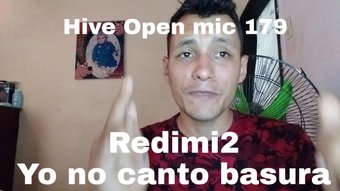






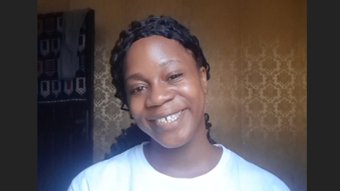




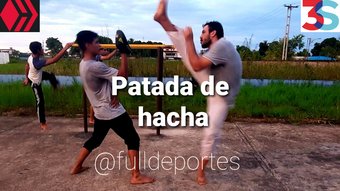


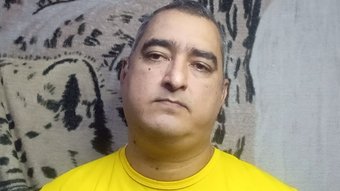




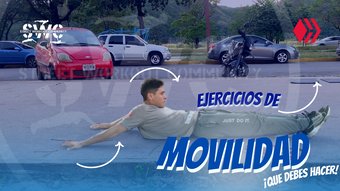



Comments:
Reply:
To comment on this video please connect a HIVE account to your profile: Connect HIVE Account